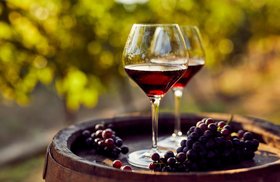Tuscan Wine: The Complete Guide (8 Best Wines to Buy, Appellations, Terroir)
Tuscany is steeped in wine history and is famed for its rolling hills and sunkissed vines!
It is home to many red wine-producing zones, including Montepulciano, Montalcino, Chianti, Bolgheri and Maremma. You’ll also find white wines from San Gimignano, and the exotic Super Tuscans from Chianti and Bolgheri.
We’ll tell you all about this wine region, the Tuscan wine appellations, the best bottles to buy, and why you should invest in Tuscan wine.
Further reading
- Explore wines from other wonderful Italian Regions in this definitive guide.
- Uncover some of the Finest Wines from Chianti.
Tuscany is a fascinating wine region. Let’s go through some facts to help you get a handle on Tuscan wine:
Where is the Tuscany Wine Region?
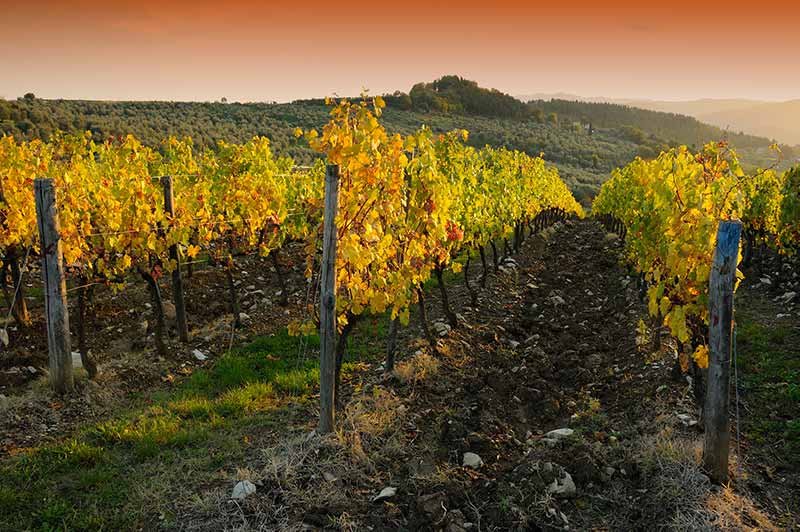
Tuscany is in central Italy. Liguria and Emilia-Romagna border it to the north, Lazio to the south, with Umbria and Marche to the east. The Tyrrhenian Sea lies to its west, bringing cool breezes to coastal sub-regions like Bolgheri.
What Wine is Tuscany Famous For?
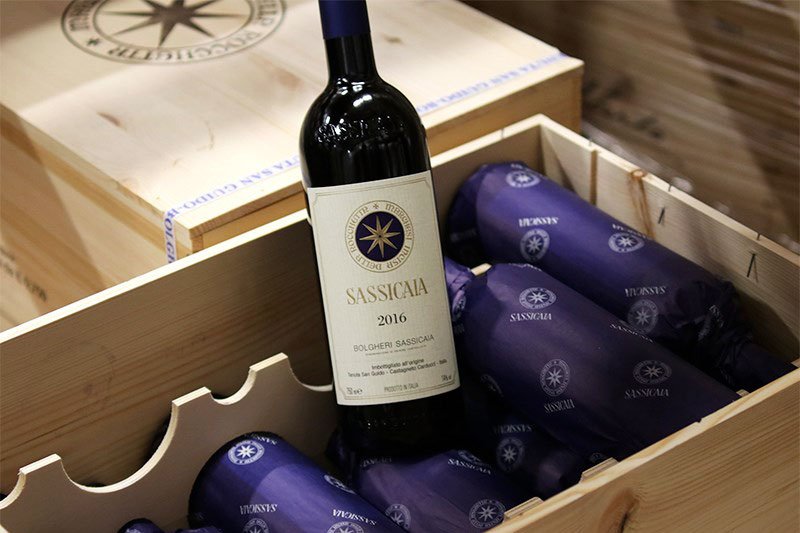
Tuscany is synonymous with its Sangiovese-based red wines. These include Brunello di Montalcino, Chianti Classico, Vino Nobile di Montepulciano, and others. The Vin Santo dessert wine is a popular white wine.
Super Tuscans (like the highly-sought-after Sassicaia — a blend of Cabernet Sauvignon and Cabernet Franc) also come from this prolific region.
What is a Super Tuscan Wine?

Super Tuscans are Tuscan wines that blend in international grape varieties (like Bordeaux varietals Cabernet Sauvignon, Merlot, Syrah, or Cabernet Franc). Some are entirely made with non-native grapes, like the renowned Merlot by Masseto.
They represent some of the region’s best red wine offerings, but because of non-native grape variety use, they aren’t classified under the traditional DOC or DOCG. Instead, you’ll find them tagged with the IGT classification.
What is the Tuscan Terroir Like?
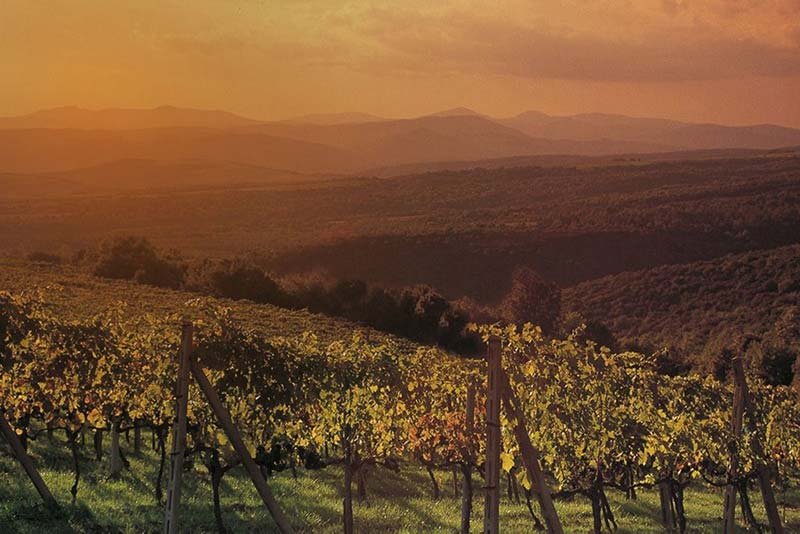
Tuscany’s varied microclimates offer diversity in its wines.
The temperate coastal zone features sandy and gravel soil, while warmer, drier hilly inland areas are rich in clay and marl deposits. Variation in altitude and diurnal temperatures help maintain the balance of sugars, acidity, and aromatics in the grapes.
What Wine Grape Varieties Grow in Tuscany?
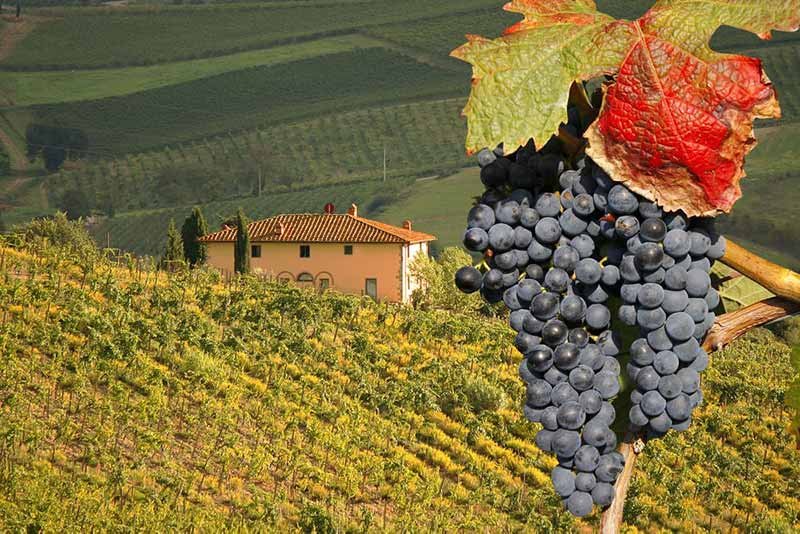
The most important of all Italian grapes,Sangiovese, is the main grape of Tuscany and accounts for around 85% of the region’s red wine volume. International red wine varieties like Cabernet Sauvignon, Merlot, and Pinot Noir have also found roots in Tuscan soil.
Trebbiano is the most planted variety of white grapes, followed by Malvasia, Vermentino, some Chardonnay, and Sauvignon Blanc. The Malvasia del Chianti grape variety is used in Chianti wine or often blended with Trebbiano.
What Does Tuscan Red Wine Taste Like?
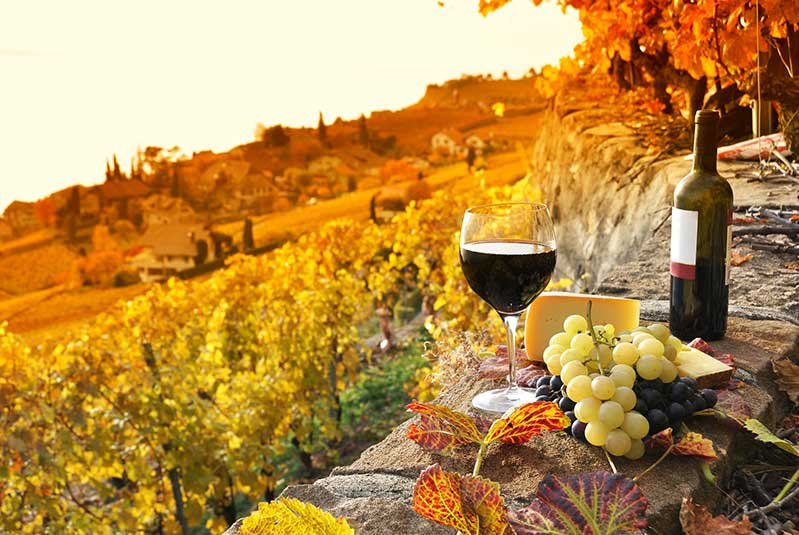
Pour a glass of Tuscan wine and be entranced by the scent of lush cherry fruit and flavors tasting of raspberry or red currants!
Young wines tend towards some acidity on the palate and have a herbaceous character.
Meanwhile, the more concentrated wines (like Brunellos and Vino Nobile Riservas) offer deeper, luxurious flavors combined with alluring aromas and balanced tannins.
Here are descriptions of some flavors and aromas you may experience:
- Brunello di Montalcino: Candied cherry, licorice, and hazelnut define a silky palate, along with refined tannins and aromas of toasted oak and leather
- Super Tuscan: Ripe cherry, ripe plum, and violets on the palate with the scent of subtle baking spice and plum
- Chianti Classico: Find notes of freshly baked pie crust, black cherry, and black raspberry, with dusty tannins
- Vino Nobile di Montepulciano: Hints of herbaceous and earthy notes along with bing cherry, plum, and violets
How is Tuscan Wine Made?
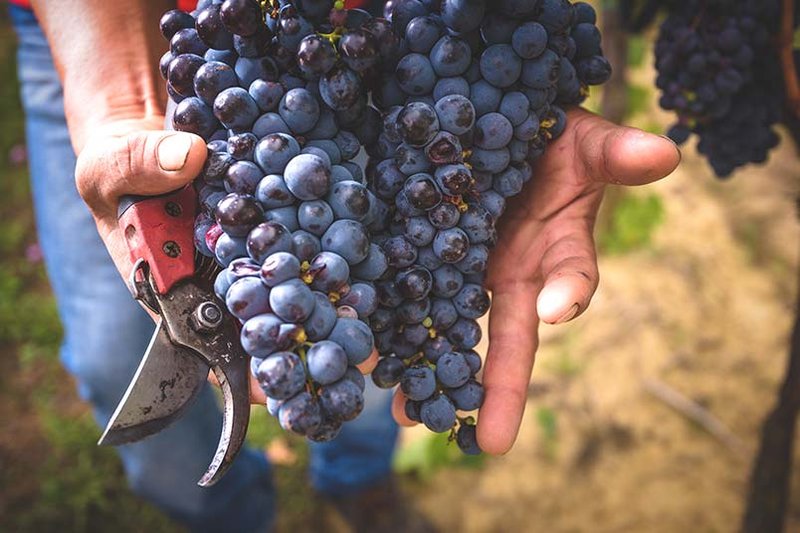
Wine production in the Tuscany wine region is not all too different from other old-world winemaking processes.
Fermentation at a Tuscan winery usually happens in glass-lined cement vats or stainless steel tanks. For aging, the Tuscan winemaker uses oak barrels in most cases, with riservas spending more time in the oak than regular wine.
What are the Tuscan Wine Classifications?
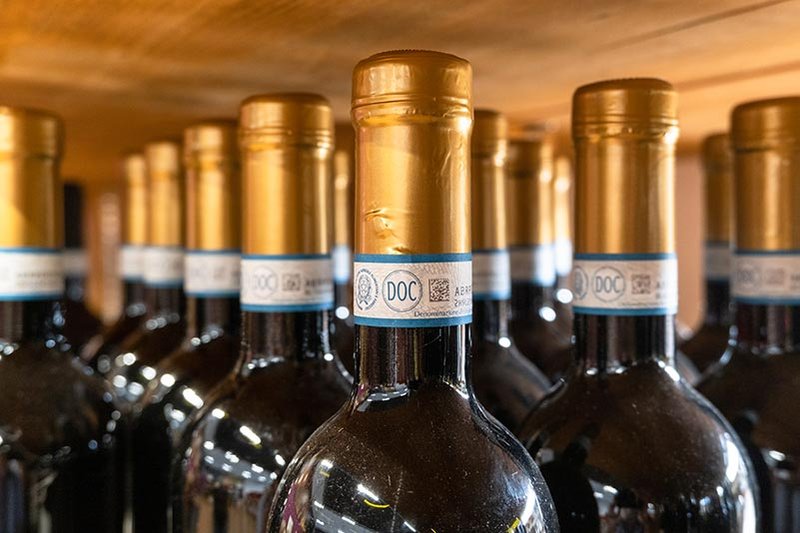
Here’s what you need to know about Tuscan wine classifications:
- DOC (Denominazione di Origine Controllata) is the fundamental quality indicator of Italian wine, related to a specific growing area, like the French AOC. A wine example would be the Casanova di Neri Rosso di Montalcino, DOC.
- DOCG (Denominazione di Origine Controllata e Garantita) is the highest tier of Italian wine, above DOC wines and adds “guaranteed.” It’s generally more expensive than DOC wines, like the Biondi Santi Tenuta Greppo Riserva, Brunello di Montalcino DOCG.
- IGT (Indicazione Geografica Tipica) sits above the table wine (VdT), and somewhat below DOC. IGT wines tend to be regional in character rather than what’s expected from a single estate wine.
However, many Super Tuscans carry the IGT tag because they use non-native grapes in the final wine blend, and can be as pricey as DOCG wines. You can see this in wines like Masseto Toscana IGT.
What Are the Primary Tuscan Wine Appellations?
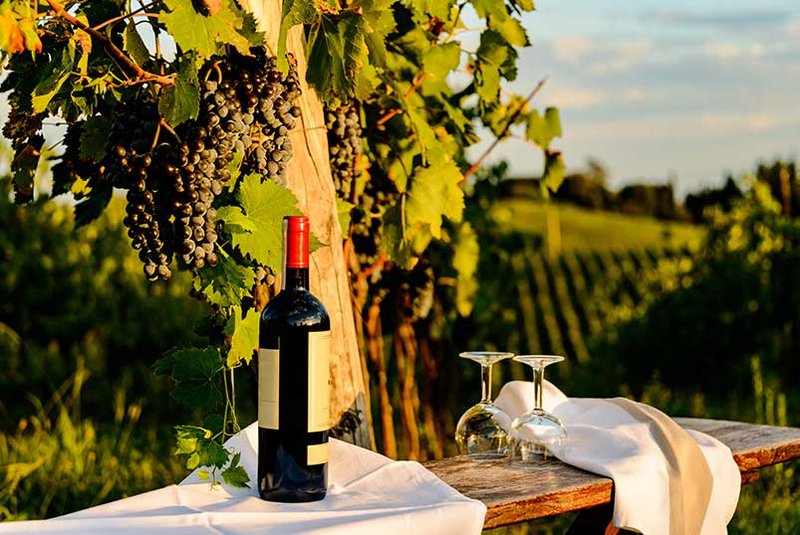
Tuscany has many appellations. Here are some of the best ones:
A. Chianti
The Chianti zone has eight subregions, and of these, wines from the Chianti Classico and Chianti Rufina are probably among the most distinctive.
Wines of Chianti must contain at least 70% Sangiovese and are generally suited to drinking young. However, there are exceptions, like the Chianti Classico Riserva, that can age for 10 years.
B. Brunello di Montalcino
The slopes of Montalcino is one of the most famed Italian wine regions, producing one of Italy’s most profound age-worthy wines, the Brunello di Montalcino. Made with 100% Sangiovese, Brunello is aged at least 4 years before release.
This region also produces a lighter, younger version called Rosso di Montalcino of the same Sangiovese grape and other styles like the sweet, white Moscadello di Montalcino.
C. Vino Nobile di Montepulciano
Vino Nobile di Montepulciano is a Sangiovese grape-based red wine from the hills around Montepulciano (don’t get this mixed up with Montepulciano d’Abruzzo, which comes from the Abruzzo region).
These are delightful wines for easy drinking, with alluring aromas of red fruit and a hint of spice. They’re softer and less rigid but show similar characteristics to Chianti Riservas.
D. Bolgheri
Bolgheri is a relatively young appellation, established in 1983, and is the heartland of the Super Tuscans. Wines like Sassicaia and Ornellaia come from this coastal region.
Bolgheri wines can be made of single-variety Sangiovese or include a blend of non-native grapes, usually Bordeaux varietals Cabernet Sauvignon, Merlot, Cabernet Franc, or Syrah.
There’s also a white wine from the Vermentino grape, sometimes blended with others like Sauvignon Blanc or Viognier.
E. San Gimignano
San Gimignano is home to the only white Tuscan DOCG wine — Vernaccia di San Gimignano. San Gimignano grapevines are planted at an altitude of no more than 500m above sea level, on chalk vineyard soils that give the wines a slight mineral character.
There’s also a San Gimignano Vin Santo DOC, a dessert wine made from Trebbiano, Malvasia del Chianti and Vernaccia di San Gimignano.
F. Morellino di Scansano
Morellino di Scansano is a southern Tuscany appellation producing a dry red wine from a Sangiovese grape variety known as Morellino.
The Morellino di Scansano DOCG is not as well-known as other Tuscan DOCG red wines (like Montalcino, Chianti Classico, or Montepulciano) but has gained more visibility in recent times.
And unlike many DOCG wines, this wine doesn’t require aging.
The Morellino di Scansano DOCG may be released less than eight months after harvest. As such, it’s characterized by a fresh, lively crispness.
Next up, some of the best bottles to buy!
Delectable Tuscan Wines To Buy In 2023
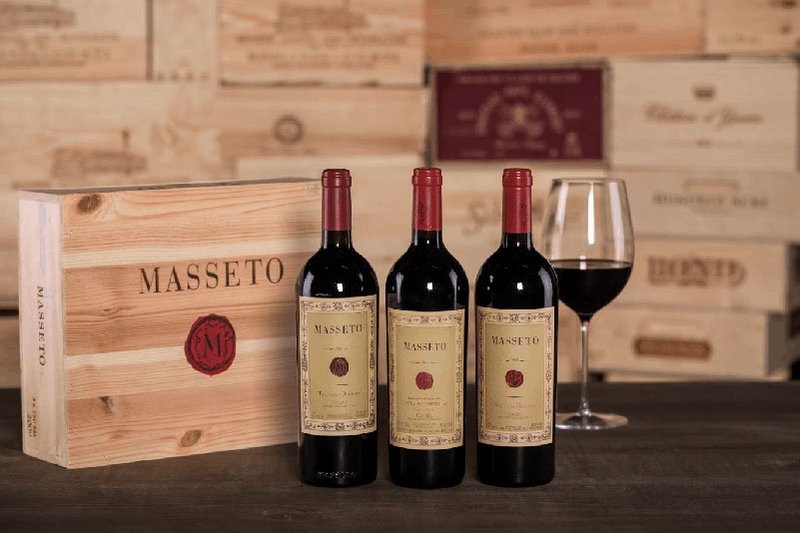
Tuscan wines are so diverse - so, it’s no wonder this region lingers on the lips of many a wine lover!
Need a wine to go with your truffle salad or Pecorino cheese?
There’s probably a Brunello or Chianti wine that’ll make a perfect match.
Interested in a bottle to save for a special occasion?
If you're in the UK you can get a case of fine Tuscan wine at VinoSelect.
There are plenty of Tuscan vintages that’ll meet the challenge. Here’s our pick of some quality wines from the Tuscan wine region for your cellar:
- 2016 Masseto Toscana IGT ($970)
- 2004 Case Basse di Gianfranco Soldera Brunello di Montalcino Riserva DOCG ($1010)
- 2010 Biondi Santi Tenuta Greppo Riserva ($580)
- 2000 Avignonesi Vin Santo di Montepulciano ($520)
- 2016 Tenuta San Guido Sassicaia Bolgheri ($400)
- 2015 Marchesi Antinori Solaia Toscana IGT ($420)
- 2015 Il Caggio IPSUS Chianti Classico DOCG ($340)
- 2015 Poliziano Le Caggiole, Vino Nobile di Montepulciano DOCG ($100)
Want to know if Tuscan fine wine is worth investing in?
Investing in Tuscan Wine
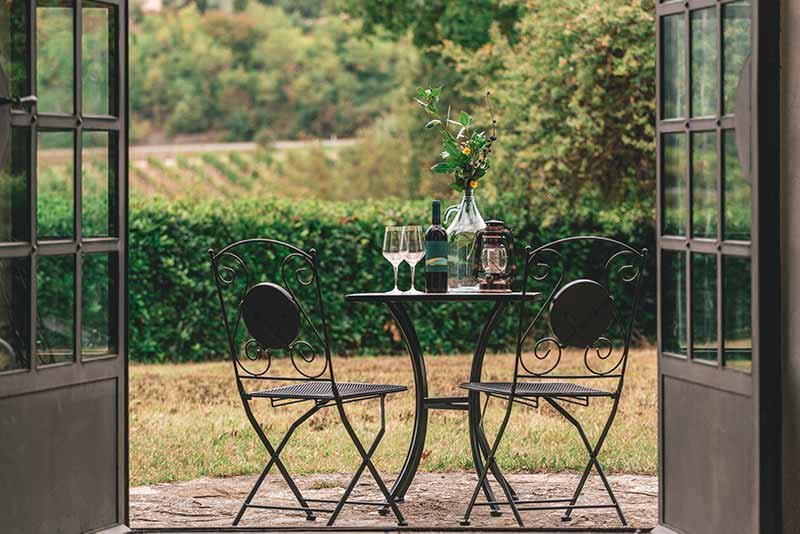
Tuscany represents around 5% of Italian wine production by volume, but more than 10% in terms of the total value. When it comes to investment, the focus tends to fall on Super Tuscans.
Trade in Italy’s finest wines has increased steadily in the last few years. Some of the most famous Super Tuscan wine brands — like Sassicaia, Ornellaia, or Solaia are sought after by investors worldwide.
On average, prices have tripled in the last decade, with these wines seeing a more stable performance than Bordeaux.
However, other Tuscan wines aren’t to be ignored.
For example, the 2010 Donatella Cinelli Colombini Casato Prime Donne Riserva, Brunello di Montalcino, saw an average price increase of 29% in two years from September 2019 to August 2021.
A portfolio incorporating Tuscan wines would be highly recommended for any serious wine investor with these notes in mind.
You may then ask, what’s an easy way to invest in wine?
And the answer is, Vinovest.
Vinovest offers an easy way to buy, store, and sell wine — with access to some of the finest wines in the world. Check out their website for more details on how you can build a wine portfolio.
Indulge in Tuscan Wine Now!
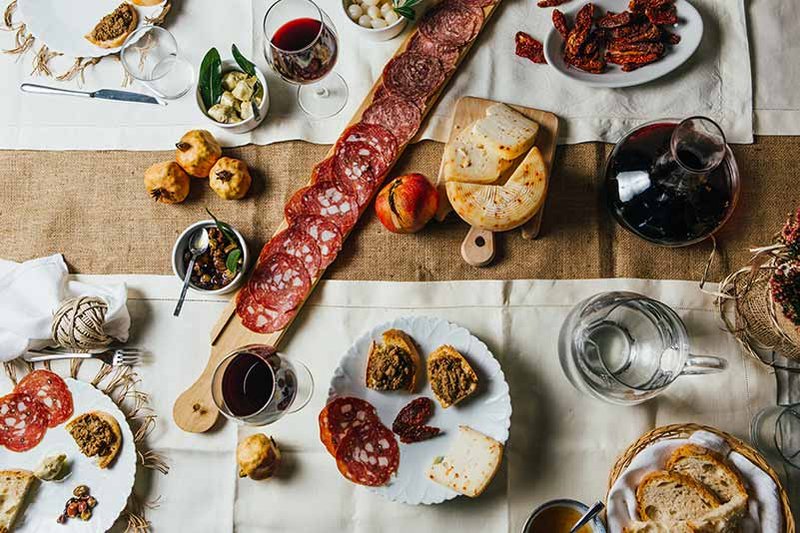
Tuscany’s offering of fantastic, diverse wines makes it one of the best places for a wine tasting experience.
If you’re in Tuscany, join a wine tour and make a point to explore those lovely cherry and plum flavors. Grab a bottle of Vernaccia di San Gimignano or Super Tuscan Cabernet to bring home.
But if you’re not in Tuscany, you can always rely on Vinovest to add a Tuscan wine to your collection!

